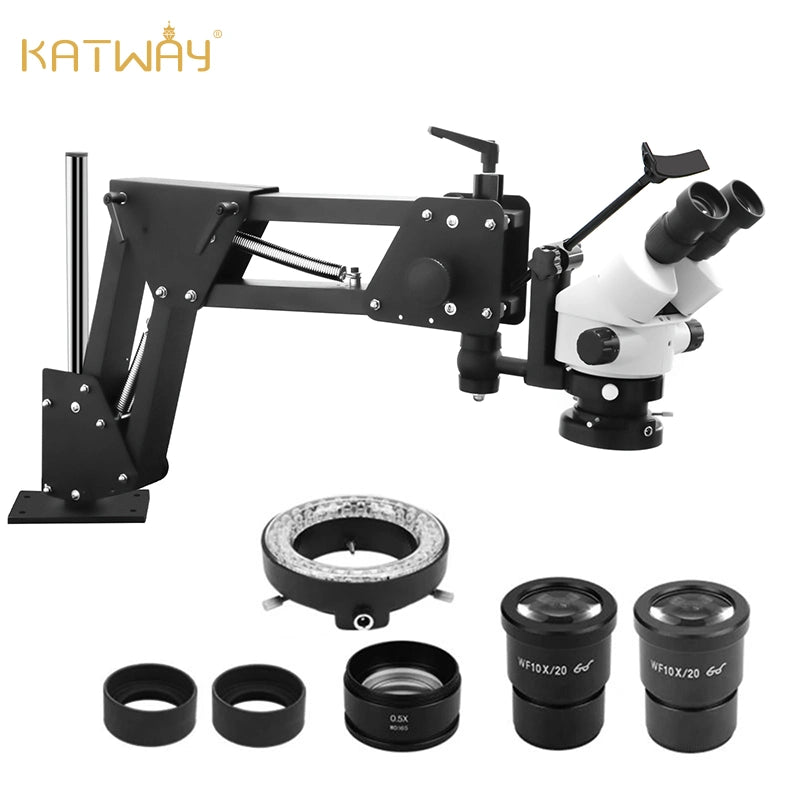Different gemstone faceting techniques and reasons
Gemstones range from dull when first mined to sparkling when designed, cut and polished. Each gemstone with different characteristics requires a different technique.
Gemstones come in four basic cuts and facets: polished, faceted, faceted and carved, each with a different design.
1.Polishing with shapes
The processing of gemstones has a long history, dating back to the Paleolithic era. In the early days, because of the processing technology, it was not possible to systematically cut and polish stones with high hardness, but only to simply polish them and set them. Until 1475, a British diamond craftsman, for the Duke of Burgundy processed a faceted diamond, since then opened the faceted gemstone processing prelude.
The "Black Prince" red spinel set in the center of the Crown Jewels of the British Empire is a typical faceted gemstone. In order to preserve this rare treasure as much as possible, the cutter polished the stone according to the shape of the original stone itself, making the bright red color shine.
Modern randomly cut stones, which are generally produced in small quantities, are very good in their natural form, reflecting the original, natural and unique beauty of the stone, and are commonly found in coral and amber.

2.Plain
First of all, let's understand what is "plain face" that is, "plain face to the sky", almost no other modification of the meaning, refers to the artificial simple polishing, the gem presents a curved, curvature of the surface appearance, also known as " It is also referred to as "faceted", "egg face", "curved face" and so on.
Plain gemstones are especially suitable for gemstones with special optical effects, such as star rubies, cat's eye, opal, moonstone, etc.; at the same time, it is also the first choice for jade cutting, such as jadeite, Hetian jade, red agate, lapis lazuli.
3.Faceted
Faceted cutting became popular in Europe in the early 14th century, and at the end of the 15th century, a cutting wheel was invented that could be turned horizontally, allowing the master to repeat the careful faceting of the gemstone's surface, taking his time to find the most suitable surface for revealing the light inside the stone.The management of light inside the stone became a central theme in gemstone cutting.
Faceting can unlock the maximum potential value of a gemstone, as gemstone cutting is an art, not that it requires a lot of artistry and inspiration, but it does require some engineering, mechanical and mathematical skills.
Modern faceted gemstones have become the mainstream practice, generally crystal transparent gemstones, will be made into faceted, such as rubies, sapphires, emeralds and so on!

4.Carving
The earliest carved stones were handcrafted using simple iron tools, including pointed drills and cutting wheels, which were used in combination with fine grit stone powder. Diamond drills were introduced in the 5th century BC, but did not become popular until several centuries later.
Originally, before the advent of signatures, engraved stones were portable seals used to imprint a design of the wearer's choice onto wax or clay in order to get a document or item recognized. Through the evolution of history, it has been used by master craftsmen to create art due to its irreplaceable aesthetic and artistic traditions, deep human history and cultural background. Carved gems have since become veritable masterpieces of art, transformed into important elements of fine jewelry works.
Carving process is more suitable for jadeite, agate, jade, relatively soft texture of the gemstones, better reflect his charm, play the carving master's imagination.
View more related articles
The Jump Ring Maker's Guide in Jewelry Crafting
Choosing the Right Material for Your Carving Project
Featured product
Popular posts
You May Also Like
-

Realizing Unique Designs: Etching and Jewelry Engraving
When people start experimenting with engraving, they want...
-
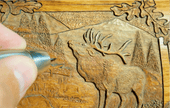
The New Favorite of Handmade Wood Carving Industry - Pneumatic Engraving Machine
With the advancement of modern science and technology, tr...
-

Metal Engraving Techniques That Beautify Jewelry
Just as one is always willing to be drawn to something mo...
-

How to Make a Gemstone Ring?
Discover how gemstone rings are made and experience the u...
-
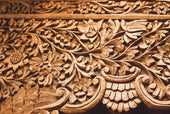
How to practice carving flowers technique in wood carving
Whether it is the complicated and delicate flower cluster...
-
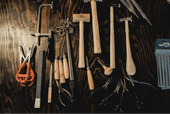
What Tools Do You Need to Be a Silversmith?
This is a beginner's guide to silversmithing. Many people...
-

How Do Beginners Make a Simple Silver Ring?
Making a silver ring for your lover is a very romantic th...
-
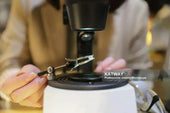
What Kind of Microscope Do Jewelers Use?
Microscopes are called the third eye of jewelers. Accordi...
-

From Hobbyist to Pro Artisan: Your Tool Upgrade Roadmap
You've carved 50 wooden spoons, sold your first custom si...
-
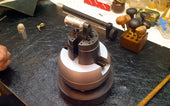
How To Choose a Engraving Vise?
Engraving vises are a type of clamping tool that engraver...
-
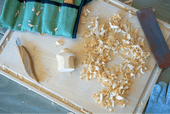
10 Essential Woodcarving Techniques for Beginners
Woodcarving is an interesting and creative art. It is not...
-

10 Tips To Teach You How To Solder Jewelry
Are you worried about the soldering technique for making ...
-
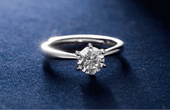
A Complete Guide to Prong Settings
Setting is a common technique in jewelry making, and claw...
-

A Complete Guide To DIY Jewelry Making
DIY jewelry making is a very interesting but not easy thi...
-
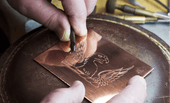
Beginner's Guide to Hand-Engraving Metal: Tools, Tips, and Tricks
Hand engraving metal is like stepping into an art form th...
-

What Are The Advantages Of Pneumatic Engraving Compared To Push Engraving?
In the engraving process, pneumatic engraving is an indis...
-

Four Practical Ways to Engrave Metal
Metal carving is the carving of a design or pattern into ...
-

Do You Know How to Engrave Tungsten Rings?
In recent years, tungsten material will be stronger and m...
-

How Do You Re-Engrave Old Jewelry?
Jewelry has a permanent beauty and unique value, and many...
-

Pneumatic Engraving Machine Vs Electric Engraving Machines
As the industrial revolution took place, machines changed...
-

The Joy of Carving Wood
Wood carving is not only a handcrafted art with a long hi...
-

How to Buy High Quality Metal Engraving Tools?
It is said that metal engraving is an extremely testing c...
-

A New Engraving Experience for You with the AT Series Motors!
We have exciting news to share with you! The AT Series mo...
-

How to Choose a Mill for Jewelry Making?
In the process of jewelry making, a jewelry mill is a ver...
-

How to Choose and Use Jump Rings?
If you are a jeweler then you are no stranger to the term...
-

Teach You How to Pick a Jewelry Engraving Machine
Jewelry engraving machine is an indispensable tool for th...
-

How Do You Cast Jewelry?
Jewelry casting is a common way of casting jewelry. In fa...
-

A Comprehensive Guide to Jewelry Engraving
Jewelry will be preferred by many people as a gift, but h...
-
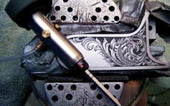
Tips for Using Engraving Tools
If you are a beginner who is just getting into carving, a...
-

Katway to Participate in Hong Kong Jewelry Show 2024
In recent years, Katway's brand strength has been improvi...
-

The Creative Path of a Jewelry Beginner
Embarking on a jewelry making journey is not only a form ...
-

The Secrets of Handmade Jewelry Engraving
Hand engraved jewelry is still used by many jewelers as a...
-

Tips for Making Silver Jewelry
Silver as a metal is a very common metal, and nowadays th...
-

How Do Beginners Use Jump Rings?
A jump ring is an essential piece of jewelry making, you ...
-

Method of Making a Carving Knife and Template Set(Ⅱ)
The last blog on making engraving tools talked about the ...
-

Six Common Casting Process Introduction
Casting Process The casting process is generally used to ...
-

Method of Making a Carving Knife and Template Set(Ⅰ)
If you are interested in carving, then you must carving k...
-

A Must for Newbies: An Easy-to-Follow Guide to Letter Carving in Wood
Do you want to know how to carve letters in wood? If you ...
-

Unlocking the Secrets of Metal Laser Engraving
With laser equipment, marking operations, whether it is a...
-

Do You Know What Metal Engraving Is?
To talk about metal engraving, we need to first understan...
-

About the Identification of Real and Fake Pearls
Pearls are an ancient organic gemstone that existed about...
-

About Jewelry Appraisal, You Need to Use the Tool - Gemstone Microscope
In recent years, with the number of gemstone enthusiasts...
-

Uses of Different Types of Microscopes
Many people know that microscopes can be used to look at ...
-

Katway's 2024 Jewelry Fair Tour - INHORGENTA MUNICH
In 2023, our company Katway took part in the Hong Kong Je...
-

How to choose the best jewelry engraving machine?
Do you want to make your own engraved jewelry that suits ...
-

Guide to Jewelry Engraving
Jewelry engraving is a work of art that involves pattern ...
-

Sharpening tools: A Good Helper for Jewellery Engraving
In the working process of a jewellery engraver, the perfo...
-

Katway's Journey to Jewelry Show 2023
In September 2023, Katway was invited to participate in J...
-

Vacuum casting in the jewelry process
With the continuous development of science and technology...
-

Engraving Machine Buyer's Guide on HH-R01 and HH-AT03
Common points of HH-R01 and HH-AT03 Do not need an air c...



